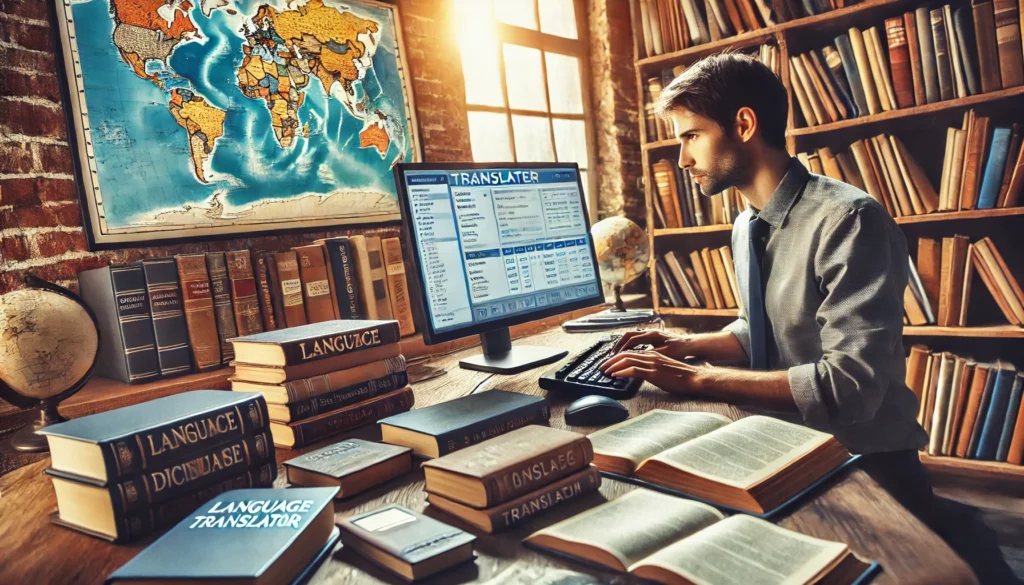“Kääntäjä,” a Finnish term that translates to “translator” in English, refers to an individual who converts written content from one language to another. This role is pivotal in fostering communication and understanding between speakers of different languages. With the global economy continuously expanding and multicultural interactions becoming commonplace, the services of a translator have become indispensable. But what does it truly mean to be a “kääntäjä,” and why is translation such an essential part of modern society?
The Role of a Translator
A translator’s primary responsibility is to bridge linguistic divides, ensuring that ideas, nuances, and messages are conveyed with accuracy and cultural sensitivity. Unlike interpreters, who work with spoken language in real-time, translators focus on written text. This can range from legal documents and literature to websites and academic articles. The role demands not only a deep understanding of the source and target languages but also cultural and contextual knowledge.
Skills Essential for a Successful Translator:
- Fluency in Both Languages: Mastery over the source and target languages is the foundation of effective translation.
- Cultural Awareness: A translator must understand idioms, cultural references, and nuances to maintain the original text’s intent.
- Subject Matter Expertise: For specialized content, such as legal or medical texts, expertise in the relevant field is crucial.
- Attention to Detail: Precision is key in maintaining the integrity of the original document.
Kääntäjä’s Work in Different Fields
1. Literary Translation
Literary translators handle books, poems, and plays, often encountering creative challenges. For instance, translating metaphorical language and cultural expressions requires creativity to retain the original work’s emotional impact and rhythm.
2. Technical and Scientific Translation
These translators work on documents filled with industry-specific terminology, such as user manuals, scientific research papers, and engineering reports. Their work ensures that technical instructions and complex theories remain clear and precise across languages.
3. Legal Translation
This field demands strict adherence to the source material’s exact meaning due to potential legal implications. Translators must be familiar with legal jargon in both languages to maintain the document’s integrity.
4. Marketing and Advertising Translation
Translating marketing materials goes beyond a literal conversion; it requires the ability to adapt slogans and promotional content to resonate with a target audience, often referred to as “transcreation.”
Technological Aids and Tools for Translators
The digital age has brought with it a plethora of tools that assist translators in their work:
Computer-Assisted Translation (CAT) Tools
CAT tools such as SDL Trados, MemoQ, and Wordfast help translators maintain consistency across long documents by segmenting texts and providing translation memory. This ensures that repeated phrases and terminologies stay uniform, enhancing productivity and accuracy.
Machine Translation (MT)
Machine translation, powered by artificial intelligence, translates content automatically. Popular platforms like Google Translate and DeepL have seen significant improvements over the years. While MT is helpful for quick, informal translations, professional translators still play a vital role in editing and refining these outputs to make them suitable for official use.
Translation Management Systems (TMS)
These platforms aid in managing translation projects, making it easier to track progress, collaborate with other translators, and streamline the workflow.
The Challenges Faced by Translators
Being a translator is far from straightforward. They encounter numerous challenges that test their skills and adaptability.
1. Ambiguity in Language
Languages are often full of ambiguities, with words that have multiple meanings or phrases that carry different connotations. The translator must discern the intended meaning and choose the most appropriate translation.
2. Cultural Differences
Maintaining the text’s cultural relevance without altering its essence can be challenging. For example, idiomatic expressions or cultural jokes may not translate directly, requiring the translator to find equivalents that evoke a similar response.
3. Time Constraints
In industries where translation is vital, such as news and legal sectors, meeting tight deadlines while ensuring accuracy can be daunting.
Qualities of a Professional Kääntäjä
Becoming a professional translator involves more than just language fluency. Here are some key qualities:
- Research Skills: Translators often need to research terms, references, and industry specifics to provide accurate translations.
- Patience and Perseverance: Especially in literary or complex technical translations, a single sentence may require significant thought to translate correctly.
- Strong Writing Skills: A translator should be a skilled writer in the target language, producing text that reads naturally to native speakers.
- Cultural Intelligence: This involves an awareness of cultural taboos and preferences, essential for translations that align with the values and sensibilities of the target audience.
The Importance of a Human Touch in Translation
Despite advancements in machine learning and AI, human translators remain irreplaceable. Machine translation lacks the ability to fully grasp the subtlety of human emotions, humor, and cultural references. A professional translator can interpret context, adjust tone, and ensure that the message resonates as intended.
Case Study: Literary Works and Their Global Reach
The translation of classic literature showcases the irreplaceable role of human translators. Take, for example, the works of Gabriel García Márquez or Haruki Murakami, whose storytelling heavily relies on cultural context and poetic language. A skilled translator can bring these stories to life in another language, preserving their beauty and cultural richness.
How to Choose a Reliable Kääntäjä
Selecting a reliable translator can make or break the success of a document’s translation. Here are steps to finding the right professional:
1. Look for Certification
Organizations like the American Translators Association (ATA) and other national bodies offer certifications that verify a translator’s competency.
2. Check Specialization
Depending on the type of document, choosing a translator with experience in that field—be it legal, technical, or literary—is important.
3. Request Samples or References
A portfolio or reference can provide insight into a translator’s quality of work and reliability.
4. Understand Their Process
Ensure the translator or translation agency has a quality control process, including proofreading and reviewing to minimize errors.
Impact of “Kääntäjä” on Business and Global Communication
Globalization has created an urgent need for professional translation services. For businesses aiming to expand their reach, the role of a translator goes beyond simple language conversion. It’s about localizing content so it appeals to different markets. For example, a marketing slogan that resonates in one country may need significant adaptation to evoke the same emotions in another.
Business Benefits of Professional Translation Services:
- Increased Market Reach: Translations enable businesses to connect with global audiences, expanding their market potential.
- Enhanced Customer Trust: A well-translated document builds trust, as customers are more likely to engage with content in their native language.
- Compliance with Regulations: Legal translations ensure businesses comply with local laws and regulations, minimizing risks and potential legal challenges.
FAQs
What is the main difference between a translator and an interpreter?
A translator deals with written content, translating texts from one language to another. An interpreter, on the other hand, translates spoken language in real-time, often during meetings or conferences.
Why can’t machine translation fully replace human translators?
While machine translation has improved, it often fails to capture the subtleties of language, cultural context, and emotional tone. Human translators add nuance, ensuring the text maintains its original meaning and impact.
What makes a good translation?
A good translation accurately conveys the message of the original text while being culturally appropriate and natural-sounding in the target language.
Are there certifications for translators?
Yes, various organizations, such as the American Translators Association (ATA), provide certification programs that help verify a translator’s proficiency.
How do translators handle idiomatic expressions?
Translators often replace idiomatic expressions with equivalents in the target language that convey the same meaning or impact, maintaining cultural relevance.
Is there a demand for multilingual translators?
Yes, translators who are fluent in multiple languages are highly sought after, especially in multinational corporations and global industries.
Conclusion
The work of a “kääntäjä” extends beyond simple word-for-word conversion. It involves deep cultural understanding, linguistic finesse, and a commitment to bridging the communication gap between diverse groups. In a world where interaction across cultures and languages is more essential than ever, the role of translators cannot be overstated. Their contributions enable literature to transcend borders, businesses to thrive internationally, and knowledge to spread globally, shaping a world that values connection and comprehension.



